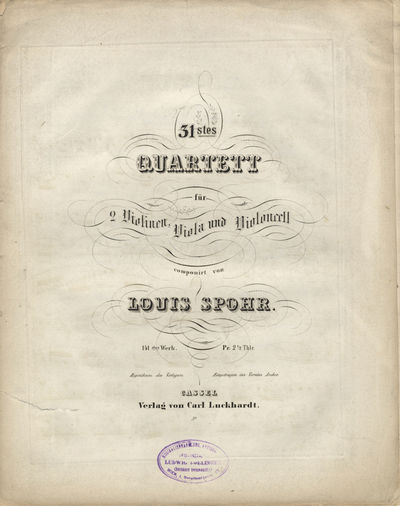1849 · Cassel
by SPOHR, Louis 1784-1859
Cassel: Carl Luckhardt [PN 129], 1849. Folio. Disbound. Violino I: [1] (title), 2-15, [i] (blank) pp.; Violino II: 13, [i] (blank) pp.; Viola: 13, [i] (blank) pp.; Violoncello: 11, [i] (blank) pp. Engraved.
Handstamp of Ludwig Doblinger (Bernhard Herzmansky) to foot of title of Violino I.
Two outer bifolia of Violino primo part detached and frayed at spine; tear to title leaf; other parts soiled and frayed at outer margin. First Edition. Göthel p. 238. WorldCat (2 copies in the U.S. only, at Harvard and Oberlin).
The present work is actually Spohr's 32nd (not 31st) quartet; Spohr inadvertently assigned the number 30 twice (truncated)
Handstamp of Ludwig Doblinger (Bernhard Herzmansky) to foot of title of Violino I.
Two outer bifolia of Violino primo part detached and frayed at spine; tear to title leaf; other parts soiled and frayed at outer margin. First Edition. Göthel p. 238. WorldCat (2 copies in the U.S. only, at Harvard and Oberlin).
The present work is actually Spohr's 32nd (not 31st) quartet; Spohr inadvertently assigned the number 30 twice (truncated)



